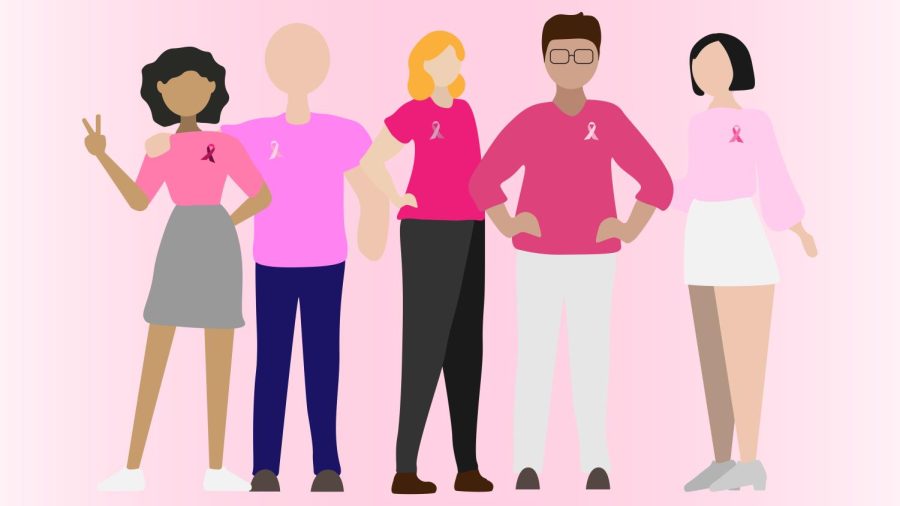OPINION: Stop saying pink is weak
Breast cancer awareness is about more than just a color
Instead of changing the color for breast cancer awareness because “pink is weak,” perhaps we should rethink why we associate “feminine colors” with weakness.
October 13, 2022
During the month of October, the color pink has solely been associated with Breast Cancer Awareness Month (BCAM).
Every October when I was in high school, students would storm the football stadium during the month of October wearing pink from head to toe, to show their support for the cause.
However, in lieu of October being BCAM, I have seen a variety of articles discussing the color pink’s association with the month, and whether the color should be changed.
One New York Times opinion author wrote, “Pink is not a serious color, though cancer is a very serious disease. Pink is about femininity; cancer is about staying alive.”
I recognize the author’s point in the article that breast cancer is often taken less seriously than other cancers because of sexism. However, something about this particular statement did not sit well with me.
I mean, what defines a color as serious or not? And most importantly, what is wrong with a color appearing feminine? The author suggests that there is something weak about femininity, which could not be further from the truth.
A little history: the American Cancer Society and Imperial Chemical Industries established BCAM in 1985. It was originally started to encourage women to get mammograms regularly.
Attention around the month continued in the 1990s when Evelyn Lauder began the Breast Cancer Research Foundation and created the pink ribbon as a symbol for the disease.
However, the very original breast cancer ribbon was actually a light peach color. Charlotte Haley was a breast cancer survivor and activist who was striving to raise money for cancer prevention. She sent messages with the peach ribbons attached, which ended up gaining attention.
Over time, the pretty pink ribbon has become a shade of light pink which is a symbol of breast cancer; however, breast cancer is so much more than a color. BCAM is about prevention, education and finding a cure.
It is important to note that pink was not chosen just because it is typically seen as a sign of femininity. According to an article by Square Cow, Margaret Welch, the director of the Color Association of the United States, said that studies have found pink to be life-affirming, calming and health-giving.
Sadie Muller, sophomore animal science and pre-vet major, said she thinks that pink should remain the color for breast cancer because, ultimately, color does not have anything to do with cancer itself.
While Muller also said she recognizes pink as a feminine color, she also points out that wearing pink is not limited to just women.
Breast cancer can affect everyone. The group “Real Men Wear Pink” is a group of community leaders determined to raise money and awareness for breast cancer. They commit to wearing pink every day to spread the word about early detection and screening, according to the American Cancer Society.
Muller explains that colors should be used as a way to help the issue and that it should be a positive thing.
“I feel like using colors to signify different cancers, only raises awareness for it, or it only resembles it in a good way,” Muller said.
In fact, breast cancer has received the most funding of any other cancer, according to Cancer Health.
Breast cancer funding is at $460 million, accounting for a third of all cancer-specific nonprofit revenue. The second in line with less than half the funding of breast cancer was leukemia at $201 million; childhood cancers were at $177 million, and lymphoma $145 million.
It is possible that the expression of pink during the month of October has helped breast cancer charities increase funds and awareness because it is so widely recognized.
Instead of changing the color from pink because it is considered “feminine,” people should reconsider the way they think about femininity.
Femininity should not be associated with weakness, and neither should a color. Associating femininity with certain colors puts stereotypes on individuals, which ends up creating a cycle of sexism.
And while we should not simply recognize a type of cancer based on a color, exercising colors as a way to show support might help raise awareness and funds for other cancers and diseases that are equally as important.










